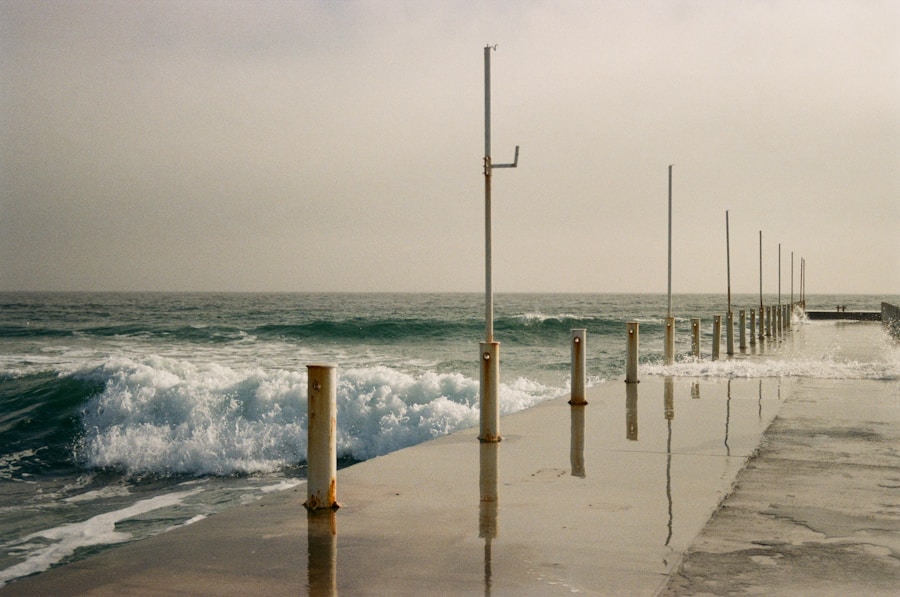Exploring the Evolution of Digital Art: A Journey Through the Digital Art Movement
Digital art has come a long way since its inception, and it’s important to take a look back at its early days to understand how it has evolved over time. The birth of digital art can be traced back to the 1950s and 1960s, when artists and scientists began experimenting with computer technology to create visual art. One of the earliest examples of digital art is the “Oscillon” series created by Ben Laposky in the late 1950s, which used an oscilloscope to generate abstract electronic patterns. This marked the beginning of a new era in art, as artists started to explore the possibilities of using computers and technology to create visual imagery.
In the 1970s, the emergence of personal computers and software programs like Adobe Photoshop and Illustrator paved the way for a new wave of digital art. Artists like Harold Cohen and Vera Molnar began using these tools to create algorithmic art, which is generated by mathematical algorithms rather than traditional artistic techniques. This marked a significant shift in the art world, as digital art started to gain recognition as a legitimate form of artistic expression. As technology continued to advance, digital art became more accessible to a wider audience, leading to a surge in popularity and innovation in the field.
The Impact of Technology on Digital Art: From Pixels to Virtual Reality
The impact of technology on digital art cannot be overstated, as it has revolutionized the way artists create and audiences experience visual imagery. One of the most significant developments in digital art is the use of pixels, which are the building blocks of digital images. The invention of digital cameras and image editing software allowed artists to manipulate pixels to create stunning visual effects and compositions. This led to the rise of digital photography and photo manipulation as popular forms of digital art, as artists could now create and edit images with unprecedented precision and control.
Another major technological advancement that has had a profound impact on digital art is the development of virtual reality (VR) technology. VR allows artists to create immersive, interactive experiences that transcend traditional two-dimensional artwork. Artists like Chris Milk and Laurie Anderson have embraced VR as a medium for artistic expression, creating virtual worlds that viewers can explore and interact with in real time. This has opened up new possibilities for storytelling and artistic collaboration, as artists can now create multi-sensory experiences that engage the viewer on a deeper level. As technology continues to evolve, the boundaries of digital art will continue to be pushed, leading to even more innovative and immersive experiences for both artists and audiences.
The Rise of Digital Art in the Contemporary Art World
In recent years, digital art has experienced a surge in popularity and recognition within the contemporary art world. Museums and galleries have started to embrace digital art as a legitimate form of artistic expression, with major institutions like the Museum of Modern Art (MoMA) and the Tate Modern dedicating exhibitions to digital artists. This newfound acceptance has helped legitimize digital art as a valuable and important part of the art world, leading to increased visibility and opportunities for digital artists.
One of the reasons for the rise of digital art in the contemporary art world is its ability to reflect and respond to the rapidly changing technological landscape. Digital artists are able to explore and comment on issues such as surveillance, artificial intelligence, and virtual reality, providing unique perspectives on these complex topics. This has made digital art relevant and engaging for audiences who are looking for new ways to engage with contemporary issues and ideas. Additionally, the accessibility and democratization of digital tools have allowed a diverse range of artists to create and share their work, leading to a more inclusive and diverse art world.
Exploring the Different Forms of Digital Art: From 2D to 3D and Beyond
Digital art encompasses a wide range of forms and mediums, from traditional 2D imagery to cutting-edge 3D animation and virtual reality experiences. One of the most popular forms of digital art is digital painting, which allows artists to create stunning, lifelike images using software programs like Adobe Photoshop and Corel Painter. Digital painting has become a popular medium for artists who want to explore new techniques and styles, as it offers endless possibilities for experimentation and creativity.
Another form of digital art that has gained traction in recent years is 3D modeling and animation. Artists can use specialized software like Autodesk Maya and Blender to create intricate 3D models and animations that push the boundaries of visual storytelling. This has led to an explosion of 3D artwork in fields such as video games, film, and advertising, as artists harness the power of 3D technology to create immersive and captivating experiences for audiences. As technology continues to advance, new forms of digital art will continue to emerge, blurring the lines between traditional artistic mediums and digital innovation.
The Influence of Digital Art on Pop Culture and Media
Digital art has had a profound influence on pop culture and media, shaping the way we consume and interact with visual imagery in our daily lives. One of the most notable examples of this influence is the rise of digital influencers and content creators on platforms like Instagram and YouTube. These individuals use digital art techniques such as photo manipulation and graphic design to create visually stunning content that resonates with millions of followers around the world. This has led to a new era of digital celebrity, where artists can gain fame and recognition through their online presence and creative output.
Additionally, digital art has played a significant role in shaping the visual language of advertising and branding. Companies are increasingly turning to digital artists to create eye-catching visuals that capture the attention of consumers in an increasingly crowded marketplace. This has led to a renaissance in graphic design and visual communication, as artists leverage digital tools to create compelling and memorable brand identities. As digital art continues to permeate pop culture and media, its influence will only continue to grow, shaping the way we perceive and engage with visual imagery in our everyday lives.
The Role of Digital Art in Social and Political Commentary
Digital art has become an important medium for social and political commentary, allowing artists to address pressing issues and advocate for change through their work. One example of this is the use of digital art as a tool for activism, with artists creating powerful imagery that raises awareness about social justice issues such as racism, gender inequality, and environmental degradation. This has led to a new wave of socially conscious artwork that challenges viewers to confront uncomfortable truths and take action towards positive change.
Furthermore, digital art has provided a platform for marginalized voices to be heard and represented in the art world. Artists from underrepresented communities are using digital tools to share their stories and perspectives, creating artwork that speaks directly to their lived experiences. This has led to a more diverse and inclusive art world, where artists from all backgrounds can find a space for their voices to be heard. As social and political issues continue to evolve, digital art will play an important role in shaping public discourse and advocating for meaningful change.
The Future of Digital Art: Exploring New Frontiers and Emerging Trends
As we look towards the future, it’s clear that digital art will continue to push boundaries and explore new frontiers in artistic expression. One emerging trend in digital art is the use of artificial intelligence (AI) as a creative tool, allowing artists to collaborate with machine learning algorithms to generate unique artwork. This has led to exciting developments in generative art, where AI systems can produce original visual compositions based on input from human artists. This fusion of human creativity with machine intelligence has opened up new possibilities for artistic exploration, leading to a reimagining of what it means to create art in the digital age.
Another area of growth in digital art is the integration of virtual reality (VR) technology into artistic practice. Artists are increasingly using VR as a medium for creating immersive experiences that transport viewers into new worlds and narratives. This has led to a renaissance in interactive storytelling and experiential artwork, as artists harness the power of VR technology to engage audiences in unprecedented ways. As VR technology becomes more accessible and affordable, we can expect to see even more innovative uses of this medium in the realm of digital art.
In conclusion, digital art has come a long way since its early days, evolving from experimental electronic patterns to immersive virtual reality experiences. The impact of technology on digital art has been profound, shaping the way artists create and audiences experience visual imagery. The rise of digital art in the contemporary art world has led to increased recognition and visibility for digital artists, while exploring different forms of digital art has opened up new possibilities for artistic expression. The influence of digital art on pop culture and media has reshaped the way we consume visual imagery in our daily lives, while its role in social and political commentary has provided a platform for marginalized voices to be heard. Looking towards the future, we can expect digital art to continue exploring new frontiers and emerging trends, pushing boundaries in artistic expression and redefining what it means to create art in the digital age.






